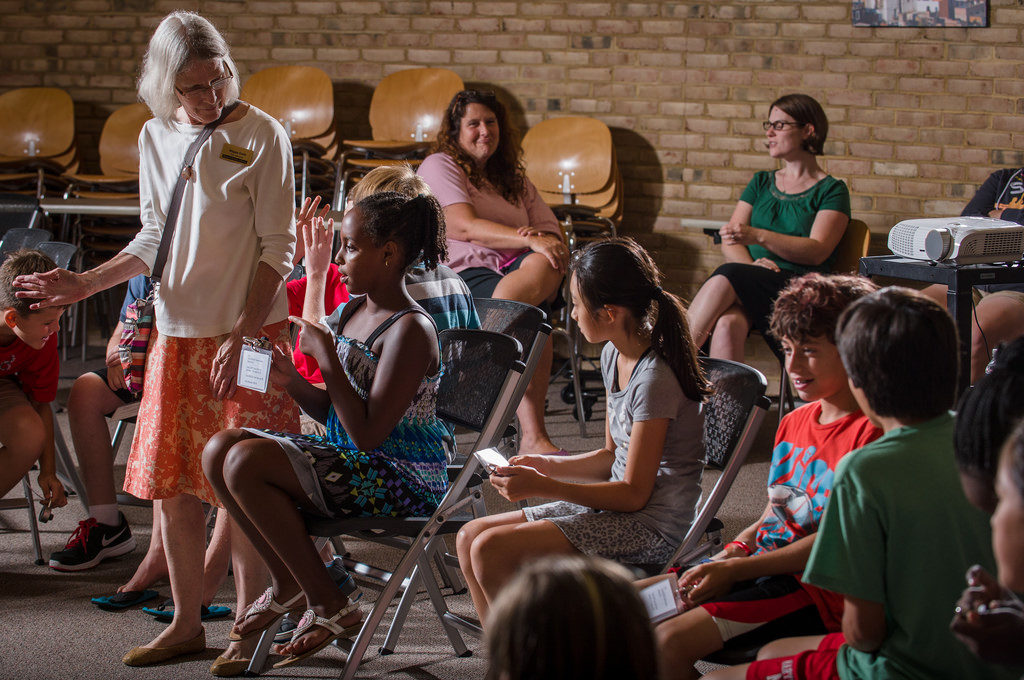New research, led by Ylva Odenbring at the University of Gothenburg, Sweden, finds that the professional culture of different schools may impact how children’s behavior is perceived and the ways in which school staff intervene. Officials at a school that was more focused on ADHD diagnoses described children’s behavior in terms of individual illnesses, taking children out of the context of their social interactions, race, gender, and socioeconomic status. Officials at schools that were less focused on diagnosis described children holistically, taking into account these other factors.

Odenbring and her colleagues analyzed the narrative data from interviews with school officials involved in student welfare teams at three schools in Sweden. Some of the interviewees included principals, teachers, and school counseling staff.
The researchers note that at all three schools, staff appeared to want to improve school climate, reduce bullying and problematic behaviors, and enable students to receive the resources they required for success. However, each school appeared to have a very different approach.
The three schools were codenamed Honeysuckle, Violet, and Daisy in order to maintain confidentiality. The schools serve grades 7-9. Each of the schools serves a different population: Daisy school is situated in a small town and serves mostly upper-middle-class students. Honeysuckle school is also part of a small town but serves students from a variety of socioeconomic backgrounds, ranging from affluent to working class. Violet school is located in a metropolitan area and is described as mostly middle-class, but very diverse, as two-thirds of the students come from outside Sweden, and 39 different languages are spoken by the students.
Odenbring and colleagues write that these three schools provide examples of the way that children are treated very differently based on how the professional school culture views diagnosis.
Honeysuckle School
Odenbring and the other researchers describe Honeysuckle school as pro-diagnosis. The principal at the school notes that academic pressures are increasing, and the rate of diagnosis is increasing as well. They report 5-7 students with a mental health diagnosis in each class. For this school, students who are struggling because of academic pressures or other environmental factors are given a diagnosis (such as ADHD).
The researchers write that, at Honeysuckle school,
“Diagnoses are seen as a way of understanding and treating these children. Consequently, there is no focus or discussion on how to change the school climate, for example.”
The professionals at this school find it difficult to help students unless the student can be given a diagnosis. According to a teacher on the school safety team,
“Without a diagnosis, it’s actually quite difficult to get help. It’s only when the student has received a diagnosis that adequate help and support can be deployed.”
Violet School
Although diagnosis is a part of the culture at Violet school, the staff reported wanting to assist children in their learning whether they had a diagnosis (such as ADHD) or not.
“Before the school has received the investigation and report from either the child and youth psychiatric care system or the psychologist, the school officials express wanting to do whatever they can to support these students by using the best possible pedagogical tools. As the school counselor puts it: ‘We can’t wait for the investigation; we have to do the best we can based on what we know’.”
There was also an increased focus on social and environmental factors that might contribute to the child’s difficulties. According to the school nurse, “Is it lack of language skills, low intelligence or problems in the home environment? Maybe you have recognized something, school counsellor? You need to put everything together and act based on that. We need a holistic picture of the student.”
At Violet school, although staff incorporate diagnosis into their work, they are also more observant of other factors. They note, for instance, that almost all mental health “investigations” concern boys.
Daisy School
At Daisy school, the staff intentionally avoid diagnosis. According to the principal, “We try not to diagnose! We don’t need to diagnose. To me it doesn’t matter if a student has ADHD; you can see it in the expression; students need different kinds of support, and it doesn’t matter if they have a diagnosis or not.”
The researchers observe that this contrasts with the attitude at Honeysuckle school, where a diagnosis was viewed as crucial to being able to support students. In fact, at Daisy school, the staff specifically stated that when they received a diagnosis, it provided little information, as they were already aware of the students’ needs and already providing support.
According to the principal, “Mostly, when a student has been assessed and we meet in a school meeting, then one may think: ‘Yes, but we knew this’ – because we’ve already worked with the student so much. Or we didn’t know the exact diagnosis, but we knew what kind of support the student was in need of.”
Odenbring and her colleagues write that this attitude is likely informed by the parental involvement at Daisy school. The staff there stated that the upper-middle-class parents want their children to be supported, rather than diagnosed. The school culture appears to have taken its cue from parental attitudes.
Diagnostic Culture
The study also highlights the influence that parents have on the culture around diagnosis at schools. According to the researchers, “Parents play a vital role in establishing the dominant discourses, values, and norms that shape the school’s institutional approach to diagnosis.”
At least in some cases, it appears that the school culture around diagnosis was related to the way that parents interact with the school and parents’ opinions regarding diagnosis. The researchers also note that this reflects the social class of the parents. It is upper-middle-class parents who appear to have the resources and confidence to influence school culture away from diagnosis.
The researchers write that in the diagnostic-focused school practice, “‘problems’ and ‘problem children’ are lifted out of their school context, and made into individual and treatable entities. Diagnoses are not discussed in terms of gender or class.” However, for the schools that were less focused on diagnosis, the emphasis was on supporting children in accessing learning based on their individual needs, with an understanding of how family life or other environmental factors might be influencing the student’s abilities in school.
The researchers cite international research that shows that race, class, and gender all have an effect on whether children receive a diagnosis—and diagnosis obscures the effects that discrimination and poverty have on children’s ability to engage at school.
Odenbring and her colleagues write,
“There is a real risk that, instead of looking at the institutional and professional level, and trying to create better schools and learning environments, what we are doing is lifting children and youth out of the school context and making their struggle to grow up into individual problems.”
****
Odenbring, Y., Johansson, T., & Berndtsson, K. H. (2017). The many faces of attention deficit hyperactivity disorder: Unruly behaviour in secondary school and diagnostic solutions. Power & Education, 9(1), 51–64. doi: 10.1177/1757743817693026 (Link)















This article provides an excellent analysis of how the diagnosis-focused viewpoint impedes actual investigation of real issues, and how parents can influence school behavior. It unfortunately does not directly address school staff behavior or structural issues that help create these “ADHD” problems. However, it does a great job of showing just how totally subjective this diagnosis is, and why the very concept of diagnosing creates more problems for kids AND schools than it ever can possibly solve.
Report comment